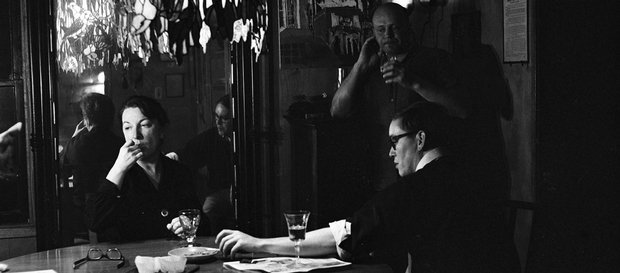 It’s not wrong to say that there aren’t many critics around like Pauline Kael anymore: both a good and a bad thing. In a time when criticism looks unmistakably like an extension of PR, when reviews amount to regurgitation of press blurbs, having someone with the trust that Kael had in her own arguments wouldn’t be a bad thing. And yet even an innocuous mention of Kael can inspire paroxysms in her acolytes and fiery rage in her detractors. It should surely be possible to both appreciate the obvious qualities of her writing, the significance of her career, and be able to point out where her influence, her instincts, and her critical method leave lasting effects that are less than desirable.
It’s not wrong to say that there aren’t many critics around like Pauline Kael anymore: both a good and a bad thing. In a time when criticism looks unmistakably like an extension of PR, when reviews amount to regurgitation of press blurbs, having someone with the trust that Kael had in her own arguments wouldn’t be a bad thing. And yet even an innocuous mention of Kael can inspire paroxysms in her acolytes and fiery rage in her detractors. It should surely be possible to both appreciate the obvious qualities of her writing, the significance of her career, and be able to point out where her influence, her instincts, and her critical method leave lasting effects that are less than desirable.
A shame then that Rob Garver’s documentary, WHAT SHE SAID: THE ART OF PAULINE KAEL, goes straight for unencumbered heroine-worship. But this has to be seen in the context of the centenary of her birth: she’s received a volume in the Library of America series, had retrospectives devoted to her and the films she loved, two biographies, by Brian Kellow and Craig Seligman, have been published, and a chapter about her featured in Michelle Dean’s book SHARP, chronicling Anglo-American intellectual women of the 20th century. There’s an audience for Kael’s words, and plenty to celebrate about them, but Graver’s appraisal contains nothing like enough critical engagement.
“Rob Garver’s documentary […] goes straight for unencumbered heroine-worship. There’s an audience for Kael’s words, and plenty to celebrate about them, but Graver’s appraisal contains nothing like enough critical engagement.”
The documentary tells the cradle-to-grave story of Kael’s life: she’s raised in California, has a daughter (Gina, one of the interviewees), begins broadcasting on a free radio station, publishes early work and finally her book I Lost It At The Movies (1965) — which becomes a bestseller in a way that no film criticism book could dream of now — is released, which leads, after a rip-roaring, paradigm-shifting review of Arthur Penn’s BONNIE AND CLYDE (1967) is published, to a major turning point. She’s hired as a critic for The New Yorker, the publication where she publishes her most famous work. The film covers these pieces in voiceover (Sarah Jessica Parker reading the words), the words alive with the snap and jazz like that of the critic Manny Farber (and 1930s screwball comedies), but without the thousands of layers of digressions and ambiguity. Kael never leaves you guessing as to what she thinks.
But the film cares less about what she thinks as opposed to the fact that she was trenchant in expressing her thinking. Controversies are covered more fully than the substance of her criticism. This both helps and hinders the film’s argument: it displays her trust in her taste, her wide learning and love for the other arts and how these become intertwined with the film writing, and her amazing ability to catch and apprehend the particularities of screen performances (her piece on Cary Grant, ‘The Man From Dream City’, is essential). But Garver is circumspect on her method of only seeing a film once, which is plainly not a policy helpful to critical thinking; her habit of pseudo-sociology while watching films is laughed away, instead of interrogated for the hokum that it is; and her propensity for hyperbole, a problem which mars the field to this day, is unacknowledged.
“The choice in interviewees is suspect, too; can anyone bring themselves to care what David O. Russell thinks about Kael?”
The choice in interviewees is suspect, too; can anyone bring themselves to care what David O. Russell thinks about Kael? It seems unlikely. There are good participants: Stephanie Zacharek is informative and has written about Kael brilliantly; the always essential Molly Haskell (who was married to Andrew Sarris) turns up and provides the greatest balance in a documentary which misrepresents the Kael vs Sarris debacle of 1963; and Paul Schrader speaks about Kael’s habit of gathering young critics together, offering official opinions from on high. But there’s an issue with the toadying tone that’s struck by some of the assertions, in one case a writer may as well be claiming that Kael is more important than the movies about which she wrote.
That the film’s argument boils down to ‘Kael was great, and unambiguously so’ is unfortunate, because it seems totally out of step with the spirit of her work. Arguments, and tough ones at that, were her most famous attribute. Arguing with and against Kael is a great pleasure, and it’s troubling to think a documentary about film criticism wouldn’t understand or appreciate this most basic of facts. The film’s ahistorical fawning doesn’t honour the life and work it purports to.

